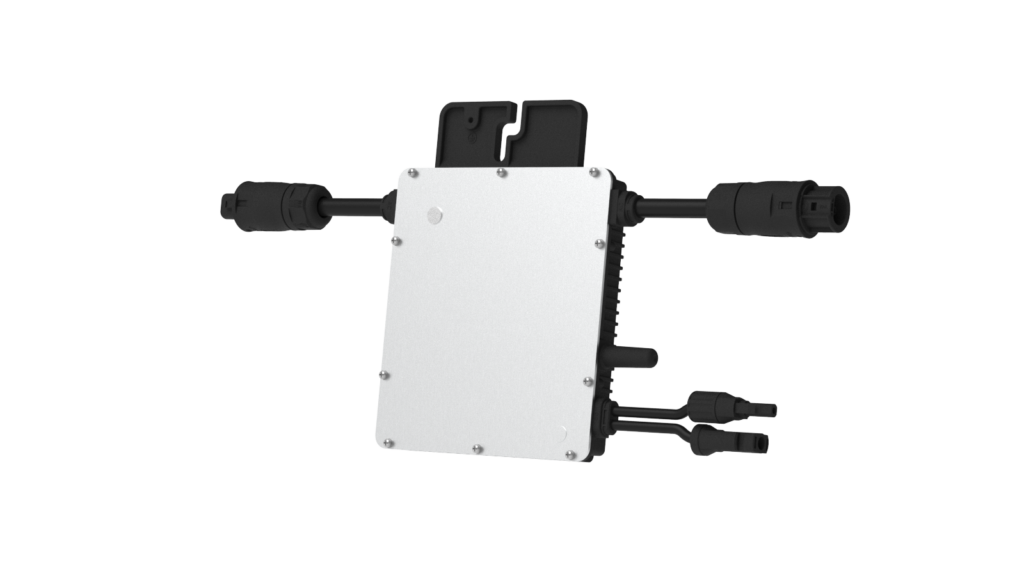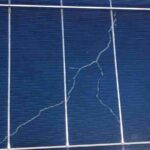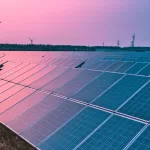Table of Contents
Intro
The adoption of solar power systems is on the rise, especially among urban apartment residents seeking eco-friendly and cost-effective energy solutions. As balcony solar power systems gain popularity, we embark on a journey to discover the remarkable advantages of integrating independent 1-in-1 microinverters into these systems.
What is 1-in-1 micro Inverter?
A One-in-One Microinverter (1-in-1 Microinverter) is a type of inverter used in solar power systems. The term “1-in-1” in its name indicates that each microinverter independently manages a single solar panel. This sets it apart from traditional central inverters (string inverters), which are typically responsible for the energy conversion of multiple solar panels.
The operation of a One-in-One Microinverter involves converting the direct current (DC) electricity generated by a solar panel into alternating current (AC) electricity. Each microinverter is dedicated to a specific solar panel, resulting in a decentralized and personalized approach to energy management. This means that even if one solar panel experiences reduced efficiency due to shading or other issues, the remaining panels can continue to operate efficiently. This design enhances the reliability and stability of the system, as each panel has its independent energy conversion unit.
Comparison with Multi-in-One Microinverters and String Inverters
Each One-in-One Microinverter is independently connected to and serves a single solar panel. They operate independently, so the performance of one panel does not affect the efficiency of other panels, providing maximum efficiency and flexibility. In contrast, Multi-in-One Microinverters are connected to multiple solar panels but in fewer quantities than string inverters. They offer better flexibility and efficiency compared to string inverters but are not as flexible as One-in-One Microinverters and are suitable for medium-sized solar systems. String inverters connect multiple solar panels in series to a single inverter, and the performance of the entire system is influenced by the lowest-performing solar panel. Shading or other issues can lead to a decrease in overall system efficiency. String inverters are typically cost-effective and suitable for large-scale installations with uniform sunlight.
In summary, One-in-One Microinverters offer the primary advantage of optimizing the performance of each individual solar panel to the maximum extent and mitigating the impact of external factors on the overall system performance. This makes them particularly suitable for small-scale applications or scenarios with space limitations, such as balcony solar systems.
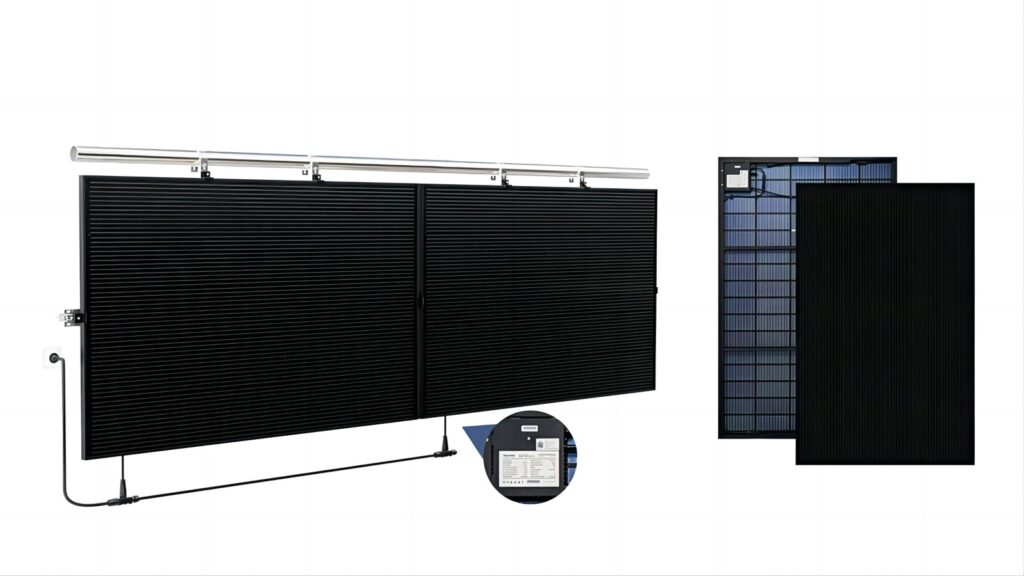
What are the benefits of 1-in-1 Micro Inverters?
Streamlined Installation: In the installation of balcony solar power systems, where space constraints are often a critical factor, the compact design of 1-in-1 microinverters facilitates direct mounting adjacent to each solar panel. This not only saves space but also simplifies the entire installation process, a crucial advantage in confined spaces like balconies.
Enhanced Efficiency: Each 1-in-1 microinverter is dedicated to managing a single solar panel, optimizing its performance to the maximum. Even if one panel experiences reduced efficiency due to shading or dirt, the others can continue operating at their peak capacity. This individualized management ensures that the overall system performance remains unaffected by a decline in the output of a single panel.
Simple Maintenance: Employing two independent 1-in-1 microinverters ensures that a failure in one unit does not disrupt the normal operation of the other. This allows the system to operate partially and maintain a certain energy production level during maintenance. Moreover, the maintenance and replacement of 1-in-1 microinverters are typically straightforward.
Adaptability to Complex Roof Structures: For buildings with intricate roof layouts, such as irregular shapes or numerous raised vents and chimneys, the use of 1-in-1 or 2-in-1 microinverters may be more suitable. Their flexible mounting positions enable easier adaptation to irregular roof layouts, reducing installation challenges and enhancing overall system efficiency.
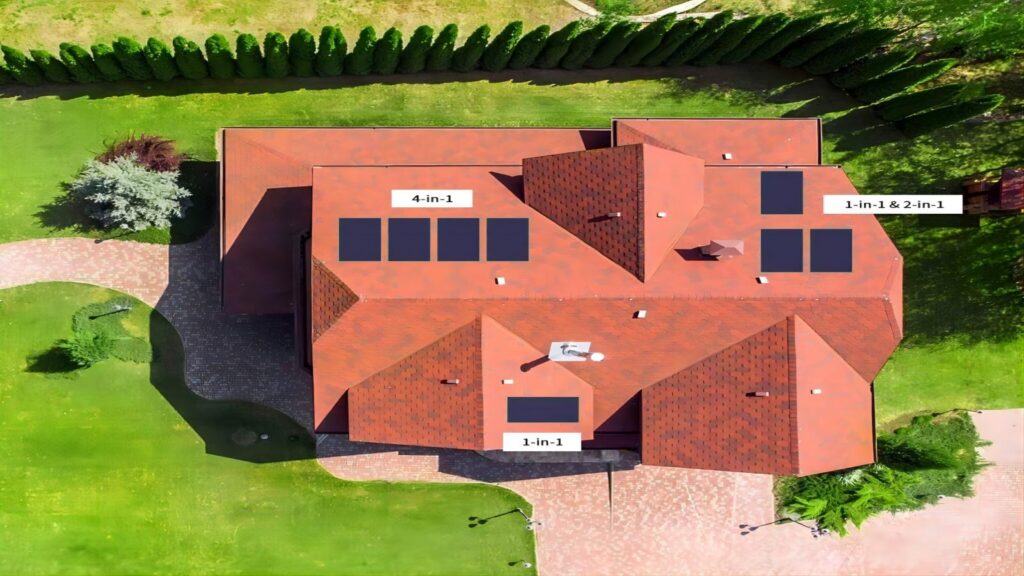
Cost Savings: Although the initial acquisition cost of two 1-in-1 microinverters may be higher than that of a single 2-in-1 microinverter, the long-term cost-effectiveness of 1-in-1 microinverters is notable. This is due to their high efficiency and lower maintenance costs. This cost advantage is particularly significant in small-scale applications like balcony solar power systemss, where Maysun collaborates with Hoymiles to ensure effective cost control through a robust supply chain. Consequently, the cost of two 1-in-1 microinverters is approximately equivalent to that of a multi-in-1 microinverter.
Easy Scalability: Utilizing two independent 1-in-1 microinverters provides increased flexibility for future expansions. If the decision is made to add more solar panels, the straightforward and economical process of adding more 1-in-1 microinverters without replacing the existing system becomes feasible.
Application in Balcony Solar Power System
Maysun Solar has ingeniously developed and launched a cutting-edge balcony solar power system, outfitted with two highly efficient 1-in-1 microinverters. This innovative system harnesses the flexibility and scalability of the 1-in-1 microinverters, making it an exemplary solution for power generation in small-scale, spatially constrained residential balcony environments. It elegantly addresses the unique challenges of limited space while delivering reliable and sustainable energy solutions.

- 2 X Maysun 410W Venusun S / Venusun Solar Modules (Integrated with MOS bypass switch )
- 2 X Hoymiles HMS-400-1A Micro Inverters
- 1 Set of Solar Alternating Current (AC) Cable Accessories (5m cable, sealing, plug, T-type connectors)
- 2 Sets of Installation Accessories
- Data Transmission Unit (optional)

New Photovoltaic news you should know about (March 2024)
Table of Contents REC Unveils a 430 W Heterojunction Solar Module Boasting 22.2% Efficiency REC, a Singapore-based PV module manufacturer, introduces its residential solar modules featuring Alpha heterojunction cell technology. Production has commenced at REC’s Industry 4.0 fab in Singapore, with initial shipments

IBC Solar Modules vs. Bifacial Glass-Glass Solar Modules: Which Is More Suitable for Winter or Low-Light Conditions?
Table of Contents Introduction As the demand for renewable energy continues to surge, advancements in solar technology have broadened the spectrum of component choices available to us. Among these, IBC (Interdigitated Back Contact) full black solar modules have garnered special attention due to

Why Are Lightweight Bifacial Solar Panels the Best Choice for Balcony Solar Power Plants?
Table of Contents In the quest for efficient and eco-friendly home energy solutions, solar photovoltaic technology has emerged as a key player due to its sustainability and clean energy benefits. Particularly in the space-constrained urban settings, the effective conversion of every inch of

Questions You Might Ask About Balcony Solar Power Plants in 2024
Table of Contents What is a Balcony Solar Power Plant? Similar to a traditional photovoltaic panel, a Balcony Solar Power Plant is a device designed to generate electricity from solar energy. This green energy generator is specifically tailored for self-consumption, but it comes with

A Step-by-Step DTU Guide for Balcony Solar Power Plants
As renewable energy becomes increasingly integral in our daily lives, Maysun Solar’s Balcony Solar Power Station, with its advanced technology and user-friendly design, represents a transformative approach to home solar solutions. The integration of a Data Transfer Unit (DTU) enhances its smart functionality

What Are The Main Components of Solar Panels?
What are the main components of solar panel? Solar panels, the cornerstone of solar energy technology, are composed of several integral parts, each contributing to their ability to harness sunlight and convert it into electrical energy. In this article, we will explore the essential

